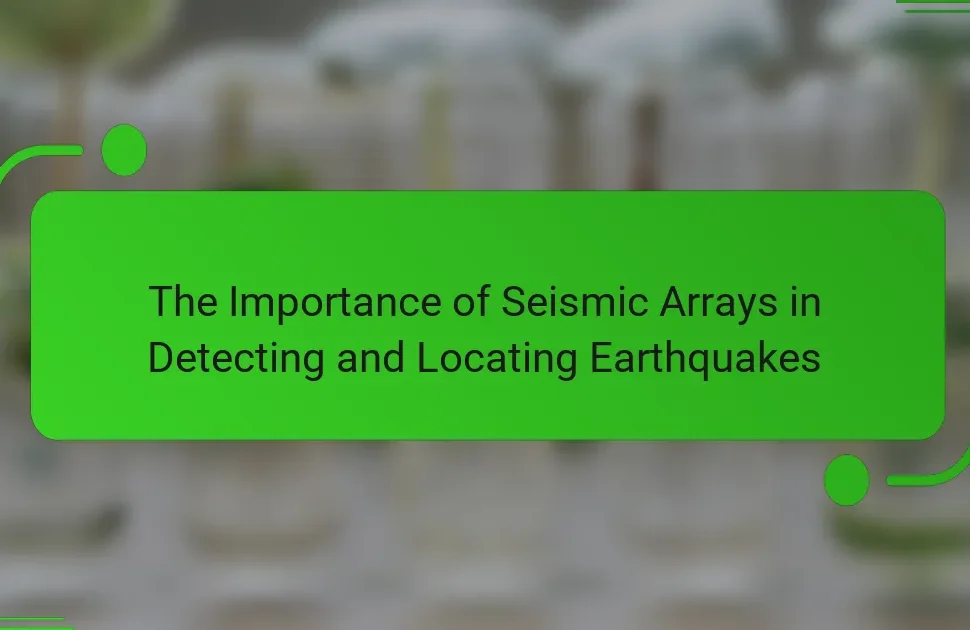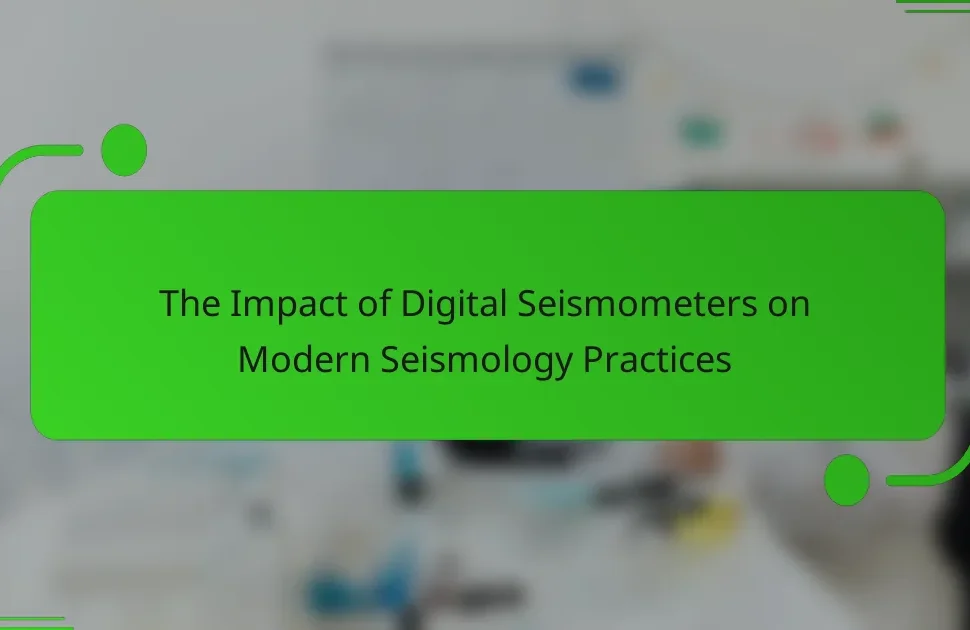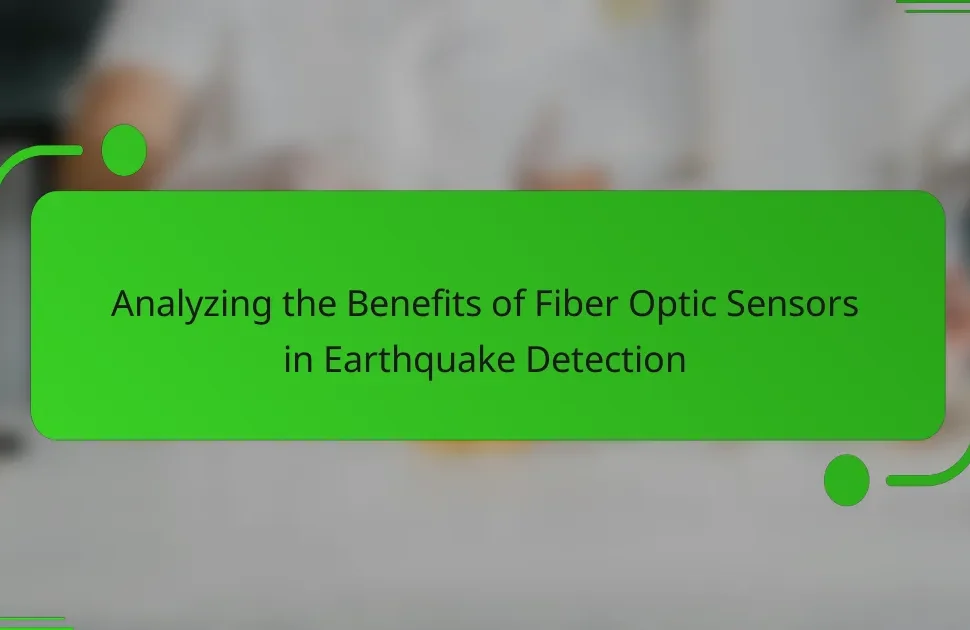Seismic sensors are devices designed to detect and measure ground movements caused by seismic waves, playing a crucial role in monitoring earthquakes and geological activities. Various types of seismic sensors, including accelerometers, geophones, and broadband seismometers, offer unique capabilities for analyzing ground motion. These sensors are essential for applications such as earthquake detection, structural integrity assessment, oil and gas exploration, and volcanic activity monitoring. Their sensitivity enables them to detect movements as small as 0.01 micrometers, providing vital data for scientific research in seismology and geophysics, as well as for military applications.
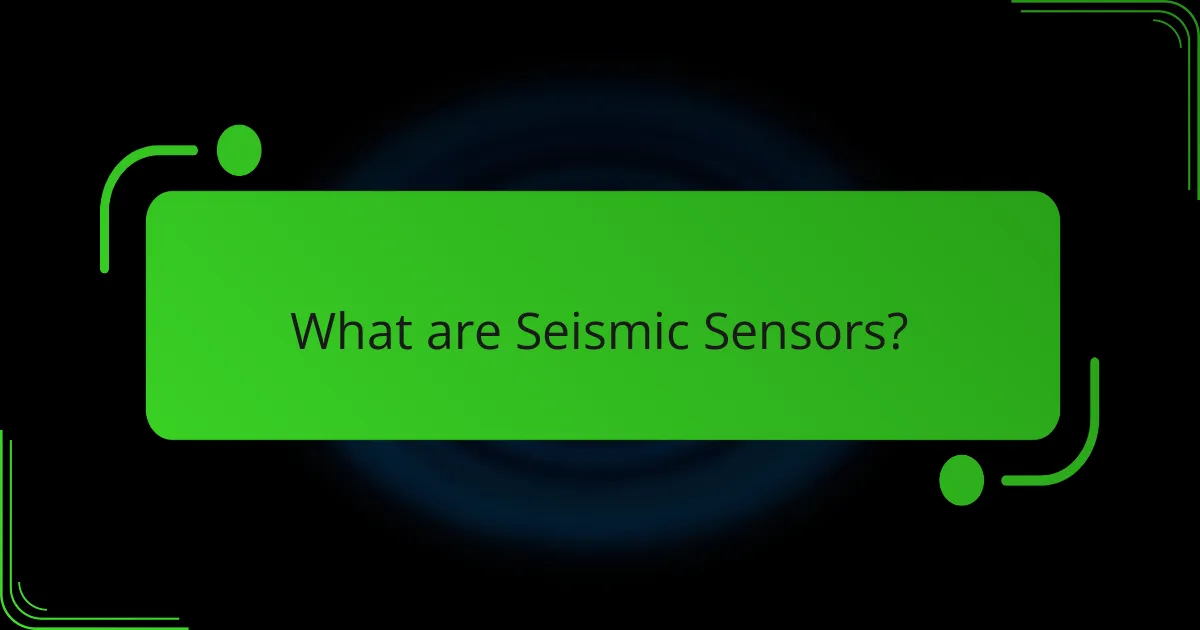
What are Seismic Sensors?
Seismic sensors are devices that detect and measure ground movements caused by seismic waves. They are crucial in monitoring earthquakes and other geological activities. These sensors convert ground motion into electrical signals for analysis. Common types include accelerometers and geophones. Accelerometers measure acceleration, while geophones detect vibrations. Seismic sensors are used in various applications, including earthquake research and structural monitoring. Their sensitivity ranges from detecting minor tremors to significant seismic events. For instance, modern seismic sensors can detect movements as small as 0.01 micrometers.
How do Seismic Sensors detect ground movements?
Seismic sensors detect ground movements by measuring vibrations caused by seismic waves. These sensors utilize accelerometers or geophones to capture the motion of the ground. When an earthquake or other disturbance occurs, seismic waves travel through the earth. The sensors convert these vibrations into electrical signals. These signals are then analyzed to determine the magnitude and direction of the ground movement. Seismic sensors can detect movements as small as a few micrometers. They are essential for earthquake monitoring and structural health assessment. Their accuracy is crucial for early warning systems and research.
What types of ground movements can Seismic Sensors measure?
Seismic sensors can measure several types of ground movements. These include vibrations from earthquakes, landslides, and volcanic activity. They also detect man-made vibrations from construction or traffic. The sensors can identify both horizontal and vertical ground motions. Additionally, they measure surface waves and body waves generated during seismic events. These capabilities make seismic sensors crucial for monitoring geological activity. Their precision allows for early warning systems and research in seismology.
What technologies are used in Seismic Sensors?
Seismic sensors utilize various technologies to detect ground movements. Common technologies include piezoelectric sensors, which generate an electrical charge in response to mechanical stress. Accelerometers are also widely used; they measure the acceleration of seismic waves. Another technology is geophones, which convert ground motion into electrical signals. Fiber optic sensors employ light transmission to detect changes in strain and temperature. MEMS (Micro-Electro-Mechanical Systems) technology enables compact and sensitive seismic sensing. Each of these technologies plays a crucial role in monitoring seismic activity accurately.
Why is sensitivity important in Seismic Sensors?
Sensitivity is important in seismic sensors because it determines the sensor’s ability to detect small ground movements. High sensitivity allows sensors to pick up minor seismic activities, which can indicate larger geological events. For example, sensors with a sensitivity of 0.1 micrometers can detect vibrations that are imperceptible to humans. This capability is crucial for early warning systems that aim to alert populations before significant earthquakes occur. Additionally, sensitive seismic sensors contribute to accurate data collection for scientific research. Studies have shown that enhanced sensitivity improves earthquake prediction models and helps in understanding tectonic processes. Therefore, sensitivity directly impacts the effectiveness and reliability of seismic monitoring systems.
How does sensitivity affect the accuracy of Seismic Sensors?
Sensitivity directly influences the accuracy of seismic sensors. Higher sensitivity allows sensors to detect smaller ground movements. This capability leads to more precise measurements of seismic events. Conversely, low sensitivity may result in missed or inaccurate readings. Accurate detection is crucial for understanding seismic activity. Research indicates that sensors with high sensitivity can identify tremors as low as 0.1 micrometers per second. This level of precision enhances data reliability for analysis. Therefore, sensitivity is a key factor in the overall performance of seismic sensors.
What factors influence the sensitivity of Seismic Sensors?
The sensitivity of seismic sensors is influenced by several factors. These include the design and materials used in the sensor. High-quality materials can improve sensitivity by reducing noise. The sensor’s calibration also plays a critical role. Proper calibration ensures accurate readings of ground movements. Environmental conditions, such as temperature and humidity, can affect sensor performance. Additionally, the frequency response of the sensor determines its ability to detect various seismic waves. Lastly, the installation method impacts sensitivity. Proper installation minimizes interference from external vibrations.
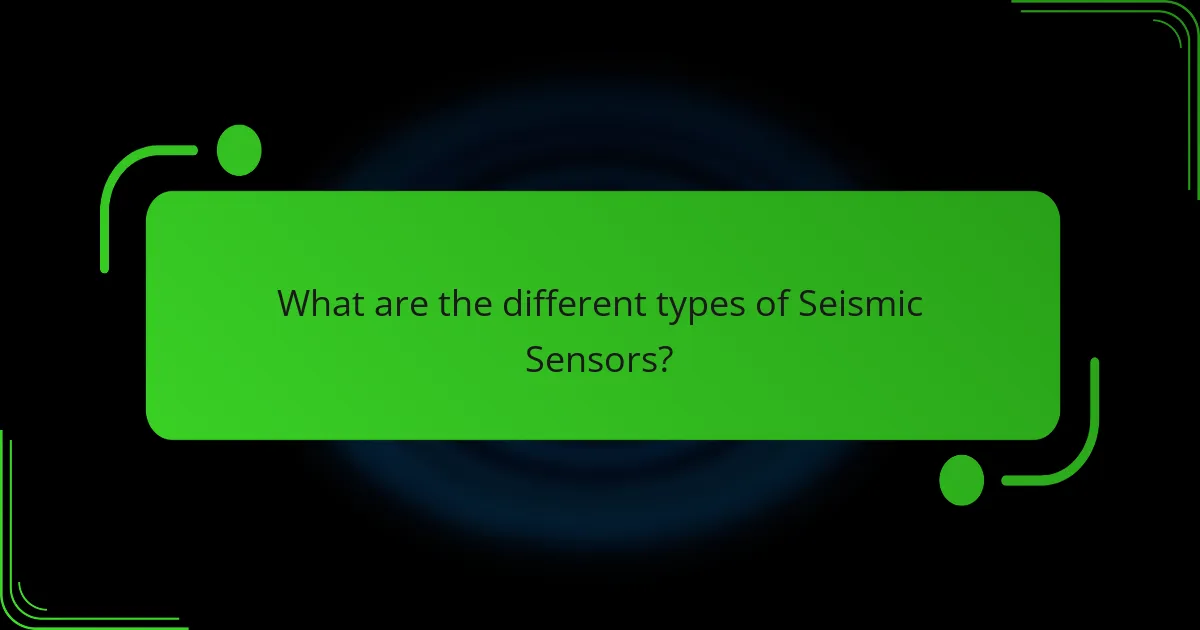
What are the different types of Seismic Sensors?
There are several types of seismic sensors used to detect ground movements. The main types include accelerometers, geophones, and broadband seismometers. Accelerometers measure changes in velocity and are sensitive to high-frequency ground motions. Geophones convert ground motion into electrical signals and are commonly used in oil and gas exploration. Broadband seismometers can detect a wide range of frequencies, making them suitable for monitoring both local and distant seismic events. Each type of sensor has unique characteristics that make it suitable for specific applications in seismology.
How do broadband and short-period Seismic Sensors differ?
Broadband seismic sensors and short-period seismic sensors differ primarily in their frequency response characteristics. Broadband sensors can detect a wide range of frequencies, typically from 0.001 Hz to 100 Hz. This allows them to capture long-period seismic waves effectively. In contrast, short-period sensors are designed for higher frequencies, usually ranging from 0.1 Hz to 50 Hz. They excel at detecting local, high-frequency seismic events.
The design of broadband sensors often includes a mass-spring system that provides sensitivity across a broad spectrum. This is crucial for monitoring distant earthquakes and capturing various seismic phenomena. Short-period sensors, however, utilize a more rigid design that responds quickly to ground movements. This makes them suitable for detecting nearby seismic activity with greater precision.
Evidence of these differences can be seen in their applications. Broadband sensors are commonly used in global seismic networks for comprehensive monitoring. Short-period sensors are often deployed in local networks to provide detailed information about nearby seismic events. This distinction highlights the importance of frequency response in the functionality of seismic sensors.
What are the applications of broadband Seismic Sensors?
Broadband seismic sensors are used in various applications including earthquake monitoring, structural health monitoring, and exploration geophysics. They provide high-resolution data on ground vibrations. This data is crucial for understanding seismic events and assessing risks. In earthquake monitoring, these sensors detect and analyze seismic waves. They help in real-time data collection during seismic activities. Structural health monitoring utilizes these sensors to assess the integrity of buildings and bridges. This ensures safety and maintenance of infrastructure. In exploration geophysics, broadband seismic sensors aid in resource exploration, such as oil and gas. Their sensitivity allows for detailed subsurface imaging.
What are the applications of short-period Seismic Sensors?
Short-period seismic sensors are primarily used for detecting and monitoring local earthquakes. They are effective in measuring high-frequency ground motions. These sensors are crucial in seismic networks for early warning systems. They help in assessing building responses during seismic events. Short-period sensors are also used in research to study seismic wave propagation. They contribute to the understanding of tectonic processes. Additionally, they are utilized in mining and construction for monitoring induced seismicity. Their applications extend to the evaluation of infrastructure resilience against seismic hazards.
What is the role of accelerometers in Seismic Sensors?
Accelerometers in seismic sensors measure ground motion during seismic events. They detect acceleration changes caused by earthquakes or other ground vibrations. This data is crucial for understanding the intensity and characteristics of seismic waves. Accelerometers convert mechanical motion into electrical signals for analysis. They provide real-time information that aids in earthquake monitoring and early warning systems. Their sensitivity allows for the detection of even minor ground movements. This capability enhances the accuracy of seismic data collection. Overall, accelerometers play a vital role in the functionality and effectiveness of seismic sensors.
How do accelerometers enhance the sensitivity of Seismic Sensors?
Accelerometers enhance the sensitivity of seismic sensors by measuring acceleration forces during ground movements. They detect minute vibrations and shifts in the earth’s surface that traditional sensors may miss. This capability allows for the precise identification of seismic events, including small tremors. Accelerometers convert mechanical motion into electrical signals, providing real-time data on ground acceleration. This data improves the overall responsiveness of seismic monitoring systems. Research shows that accelerometers can detect ground motions as low as 0.01g. Their integration into seismic sensors significantly increases their accuracy and reliability in earthquake detection.
What are the limitations of using accelerometers in Seismic Sensors?
Accelerometers in seismic sensors have several limitations. They are sensitive to high-frequency noise, which can obscure real seismic signals. This noise can lead to inaccurate readings during low-magnitude events. Additionally, accelerometers may not effectively capture long-period ground motions. Their response can be affected by temperature variations, impacting measurement accuracy. Calibration is essential but can be challenging over time. Furthermore, accelerometers require a stable installation to ensure reliable data. These factors collectively limit their effectiveness in certain seismic monitoring scenarios.
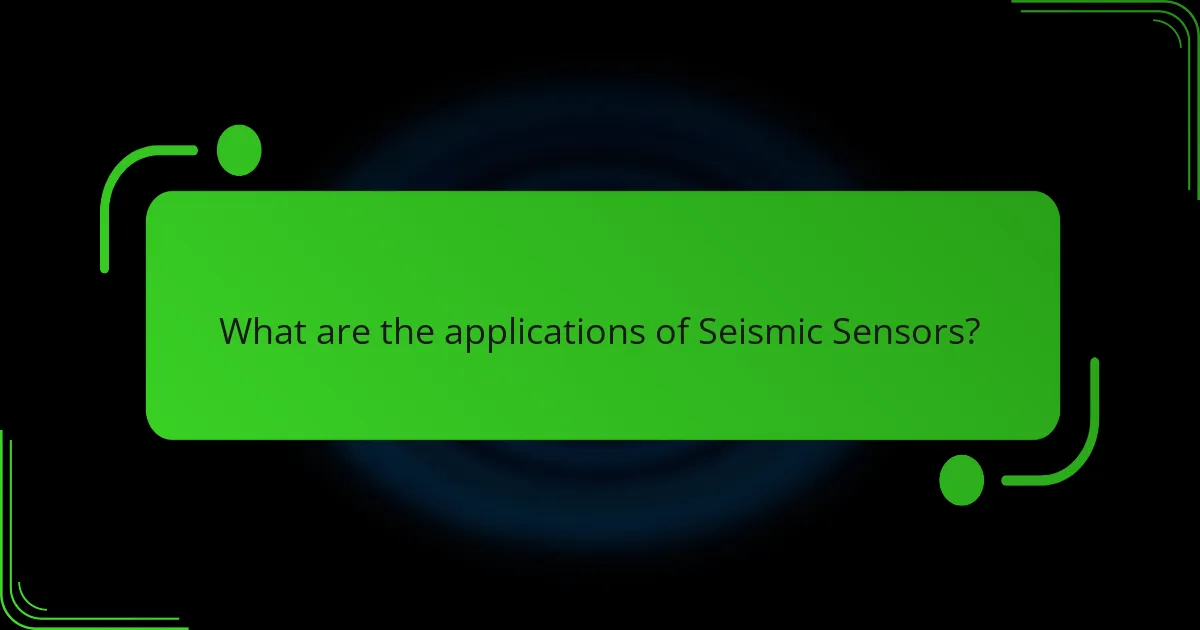
What are the applications of Seismic Sensors?
Seismic sensors are used in various applications, primarily for monitoring ground movements. They play a crucial role in earthquake detection and early warning systems. These sensors help in assessing structural integrity in buildings and bridges during seismic events. Additionally, they are used in oil and gas exploration to detect subsurface geological formations. Seismic sensors also assist in studying volcanic activity and landslide detection. Their data is vital for scientific research in seismology and geophysics. Furthermore, they are employed in military applications for monitoring ground vibrations. Overall, seismic sensors provide essential information for safety and environmental monitoring.
How are Seismic Sensors used in earthquake monitoring?
Seismic sensors are used in earthquake monitoring to detect and measure ground movements caused by seismic waves. These sensors, often referred to as seismometers, convert ground motion into electrical signals. The data collected helps in analyzing the magnitude, depth, and location of earthquakes. Seismic sensors can identify different types of seismic waves, such as P-waves and S-waves. They are deployed in networks to provide real-time data for early warning systems. For example, the United States Geological Survey (USGS) operates a vast network of seismic sensors across the country. This network allows for rapid assessment and dissemination of information during seismic events.
What data do Seismic Sensors provide for earthquake prediction?
Seismic sensors provide data on ground vibrations and seismic waves for earthquake prediction. They measure parameters such as amplitude, frequency, and duration of seismic waves. These measurements help identify patterns associated with seismic activity. Seismic sensors can detect both primary (P) and secondary (S) waves. The data collected can indicate the location and magnitude of potential earthquakes. Historical data from seismic sensors has shown correlations between specific wave patterns and earthquake occurrences. This information is crucial for early warning systems and risk assessment.
How do Seismic Sensors assist in disaster response?
Seismic sensors assist in disaster response by detecting ground movements during seismic events. They provide real-time data on earthquake magnitude and location. This information is crucial for emergency services to assess the impact and coordinate response efforts. Seismic sensors can trigger early warning systems. These systems notify communities seconds before shaking occurs, allowing for evacuation and safety measures. According to the United States Geological Survey, seismic networks have significantly improved response times to earthquakes. The rapid data transmission from these sensors enhances situational awareness for first responders.
What industries benefit from Seismic Sensors?
Seismic sensors benefit several industries. The oil and gas industry uses them for monitoring subsurface activities. They help in detecting and analyzing seismic events related to drilling and extraction. The construction industry employs seismic sensors for site assessment and structural monitoring. They ensure safety and compliance with regulations. The environmental sector utilizes these sensors for earthquake detection and research. They contribute to hazard assessment and disaster preparedness. The transportation industry also benefits by monitoring ground vibrations affecting infrastructure. Seismic sensors enhance safety in railways and highways.
How do construction and civil engineering utilize Seismic Sensors?
Seismic sensors are utilized in construction and civil engineering to monitor ground movements and assess structural integrity. These sensors detect vibrations caused by earthquakes and other seismic activities. They provide real-time data on ground motion, which is crucial for evaluating the safety of structures. Engineers use this data to design buildings that can withstand seismic forces. In addition, seismic sensors help in identifying potential risks in existing structures. They also contribute to the development of early warning systems for earthquakes. This technology enhances the resilience of infrastructure against seismic events. According to the U.S. Geological Survey, effective use of seismic sensors can significantly reduce the risk of structural failure during earthquakes.
What role do Seismic Sensors play in oil and gas exploration?
Seismic sensors play a critical role in oil and gas exploration by detecting subsurface geological formations. They measure the reflection and refraction of seismic waves generated by controlled sources. This data helps geologists and engineers identify potential oil and gas reservoirs. Seismic sensors can provide detailed images of the Earth’s subsurface structure. This imaging allows for better decision-making in drilling locations. The technology improves the accuracy of resource estimation. Studies show that seismic surveys can reduce exploration costs significantly. For instance, a successful seismic survey can lead to a 30% reduction in drilling failures.
What are best practices for using Seismic Sensors effectively?
To use seismic sensors effectively, ensure proper installation and calibration. Position sensors on stable ground to minimize interference. Regularly test and maintain sensors to ensure accurate readings. Implement data analysis software for real-time monitoring. Utilize multiple sensors for comprehensive coverage of the area. Train personnel on interpreting sensor data accurately. Follow industry standards for seismic monitoring to enhance reliability. These practices improve data quality and sensor performance, ensuring effective monitoring of ground movements.
How should Seismic Sensors be calibrated for optimal performance?
Seismic sensors should be calibrated by following a systematic procedure to ensure optimal performance. First, establish a baseline measurement in a controlled environment. This involves using known seismic signals to evaluate sensor response. Next, adjust the sensor’s gain settings to match the expected signal amplitude. Accurate gain settings enhance the sensor’s ability to detect subtle ground movements.
Additionally, implement frequency response testing. This ensures that the sensor accurately captures the relevant frequency range of seismic waves. Calibration should also include temperature compensation adjustments. Temperature fluctuations can affect sensor performance and accuracy.
Regular maintenance and recalibration are essential to account for any drift in sensor performance over time. According to the National Earthquake Information Center, periodic calibration should occur at least annually to maintain accuracy. This comprehensive approach ensures that seismic sensors operate at their highest sensitivity and reliability.
What maintenance tips ensure the longevity of Seismic Sensors?
Regular calibration is essential for the longevity of seismic sensors. This ensures accuracy in measurements over time. Keeping sensors clean prevents dust and debris from affecting performance. Routine inspections help identify potential issues before they escalate. Proper installation is crucial; sensors should be mounted securely and in appropriate locations. Environmental factors like temperature and humidity must be monitored. Avoiding exposure to extreme conditions extends sensor lifespan. Following manufacturer guidelines for maintenance is also recommended. These practices enhance reliability and effectiveness in detecting ground movements.
Seismic sensors are essential devices designed to detect and measure ground movements caused by seismic waves, playing a critical role in earthquake monitoring and geological research. This article provides an in-depth overview of seismic sensors, including their types, technologies, and sensitivity, which is crucial for accurately detecting minor ground movements and enhancing earthquake prediction models. Key applications across various industries, such as construction, oil and gas exploration, and disaster response, are also explored, alongside best practices for effective sensor use and maintenance. The discussion highlights the importance of sensitivity in seismic sensors and its impact on data accuracy and reliability in monitoring seismic activity.

